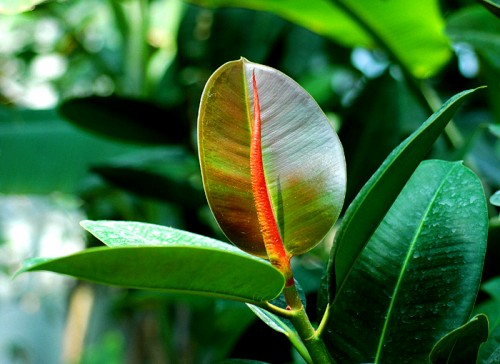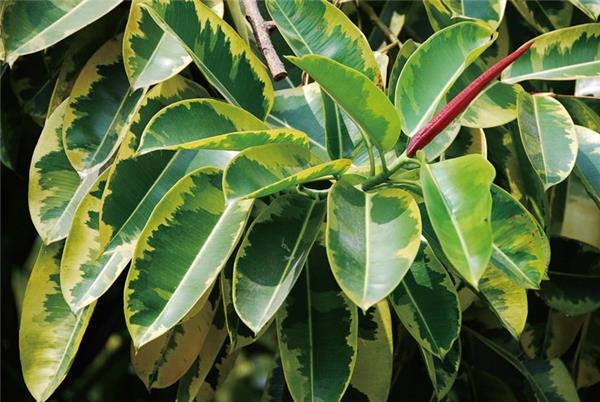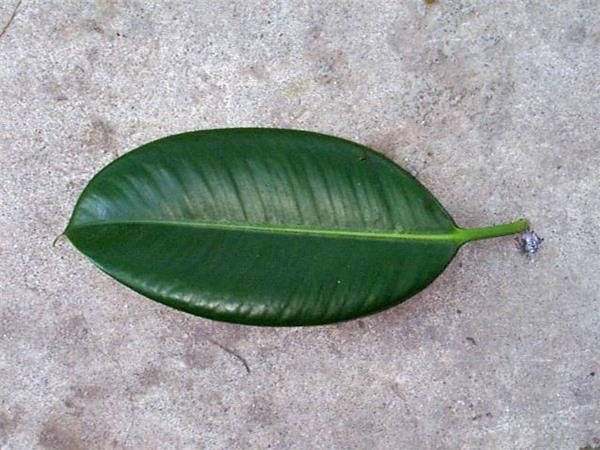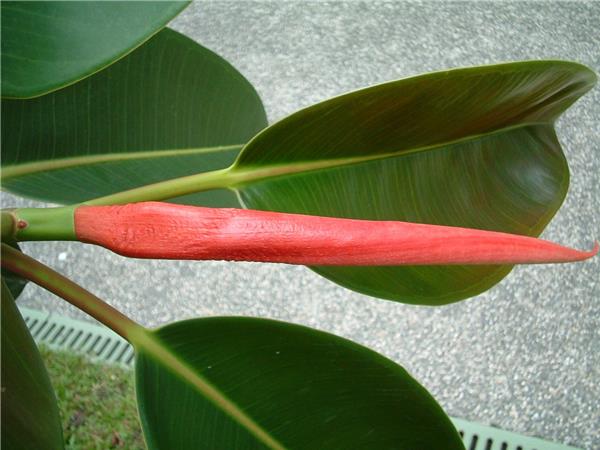How to cultivate Indian rubber trees correctly
Indian rubber tree is a kind of plant with high ornamental value, which belongs to typical foliage plants. Like ordinary rubber trees, it is a typical "lazy plant" and is easy to feed.

I. Culture methods of Indian rubber trees
Habits: Indian rubber tree likes to grow in a warm and humid environment, it is not cold-resistant, but it can also absorb light and be able to withstand shade very well, and its requirement for soil is to be fertile and moist, but also to have a certain line of permeability. Because it can be slightly dry-resistant, the temperature suitable for its growth should be between 20 and 25 degrees.
Reproduction: Indian trees are mainly cut in the way of cutting, of course, they can also be propagated by pressing strips. In Indian rubber trees, hard branches need to be taken for one or two years, and then the leaves of the lower part of the branches are removed. The two leaves tied together at the top can also reduce transpiration, and the cut of the branches can also be sealed with plant ash or plaster to avoid milk loss.
Water and fertilizer: during the growing period, besides watering every day in midsummer, foliar water should be sprayed several times, and watering should be reduced in autumn and winter. In areas where the weather is colder, you should move to the greenhouse in winter. In the period of vigorous growth, the fertilizer and water of rotten cake was applied every two weeks.
Turn the basin: after the Indian rubber tree becomes a seedling, it is generally appropriate to turn the basin and change the soil before the new buds grow every spring. When turning the basin, cut off the curled root system properly and add new culture soil and base fertilizer. For overgrown plants, you can also change to a larger flowerpot in September.
Pruning: in order to make the plant shape of potted rubber trees plump, coring should be carried out when the seedlings grow to 60-80 cm high to promote lateral bud germination. After the lateral branches grow, choose 3-5, and then cut the opposite lateral branches once a year, and you can get round and plump trees 1.5-2 meters high in 3 years.

2. Common problems in the cultivation of Indian rubber trees
The leaves suddenly fall off: the tree type may be overwatered; the winter temperature is too low, too much fertilizer, too thick: a sudden cold wind blows: the hanging type can be too weak; or it may be moved from a suitable environment to another environment.
The lowest old leaves fall off: usually this is a natural law, if the number is too large, it may be a lack of nitrogen fertilizer, fertilizer should be replenished in time.
The leaf margin turns yellow and some old leaves fall off: it is an early manifestation of lack of fertilizer. Fertilizers should be applied regularly during the growing season.
The leaves are dry and curled: it may be caused by direct sunlight in the second season, or it may be that the basin soil is too dry and short of water. Timely shading and watering, and spray to increase humidity.

What is the value of rubber trees
The value of Indian rubber trees is mainly reflected in ornamental aspects. It belongs to the evergreen type of the four seasons and is also a common foliage tree species. Indian rubber trees potted can be decorated and decorated in the living room bedroom. at the same time, it can also be used to decorate and beautify the environment in places such as hotels.
Action
1. Indian rubber trees are dark green and play a great role in relieving eye fatigue, and they are also a good place for eyes to rest.
2. It not only has a strong vitality, but also symbolizes a spirit of continuous self-improvement.
3. Its shape is very beautiful, and it can be well decorated and decorated with indoor environment.

The Indian rubber tree has beautiful and generous plant shape and bright green leaves, which can effectively improve the quality of the room and fengshui at home, so interested friends might as well try breeding.
Related
- Wuhan Hospital Iron Tree Blooming Result Was Instantly Frightened by the Gardener Master
- Which variety of camellia is the most fragrant and best? Which one do you like best?
- What is the small blue coat, the breeding methods and matters needing attention of the succulent plant
- Dormancy time and maintenance management of succulent plants during dormancy
- Minas succulent how to raise, Minas succulent plant pictures
- What are the varieties of winter succulent plants
- How to raise succulent plants in twelve rolls? let's take a look at some experience of breeding twelve rolls.
- Attention should be paid to water control for succulent plants during dormant period (winter and summer)
- Watering experience of twelve rolls of succulent plants
- Techniques for fertilizing succulent plants. An article will let you know how to fertilize succulent plants.



